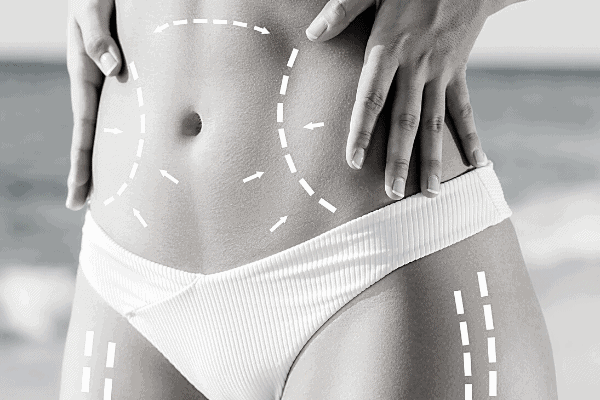May 31st, 2025
Dr. Mulholland, Md
Losing one’s hair is a very common occurrence that affects close to 150 million people worldwide. This hair loss, known as alopecia, can affect both men and women throughout their lives. For men, roughly 85% of them will experience alopecia by the age of 50, while roughly half of women will experience it.
Alopecia doesn’t appear the same for everyone, however, and can come in many different forms for a number of different reasons.
This article takes a look into alopecia, what causes alopecia, symptoms, and treatment options.
What Is Alopecia Areata?
Alopecia is an autoimmune condition that causes a person’s hair follicles to shed at a very heightened state. While the average person sheds 50-100 hairs a day, those with alopecia may lose hundreds of hair follicles a day, leading to a very noticeable shedding. Often, those with alopecia can even begin to notice the hair falling out in larger, quarter-size clumps, which can be a startling experience.
There are several types of alopecia, the most common form being alopecia Areata. In some cases, the hair loss may be temporary, while others may be more permanent. Other types of alopecia can include:
Alopecia areata totalis, where all of the hair on a person’s head falls out.
Alopecia areata Universalis, where hair loss takes place over a person’s entire body, not just their head
Diffuse alopecia areata is a sudden thinning of your hair rather than lost patches.
Ophiasis alopecia areata causes hair loss in a band shape around the sides and back of your head.
Symptoms of Alopecia
More often than not, the only symptom of alopecia is simply hair loss. However, the way this hair loss comes can range in a number of ways, such as the following common hair loss symptoms.
Small patches form individually on the scalp and body
Patches form together to grow into large bald spots
Hair growing but falling out almost right away.
Heightened hair loss, but only during cold weather
There are a few other signs of alopecia not related to hair follicles, however, such as fingernails and toenails becoming more brittle, cracked, and red. The bald patches themselves can occasionally come with a tingling or itching feeling as well.
Causes of Alopecia
If you’re wondering what alopecia caused by is, most causes of hair loss, including alopecia, pertain to any of the following factors:
Genetics
Genetics is the most common cause of hair loss. When a family member like a parent or grandparent has the hair-loss gene, it has a heightened risk of carrying on to the next generation. This is known as androgenic alopecia or male and female pattern baldness. With men, androgenic alopecia starts as a receding hairline and bald spots, while female pattern baldness typically starts at the crown of the head, causing a widened hair part in the centre of the scalp.
Hormone changes or illness
There are many different types of conditions or hormonal reasons that can cause hair loss.
Pregnancy, for example, causes a woman’s body to go through a mass number of hormone changes, some of which can cause temporary alopecia. Other hormonal changes can include childbirth and menopause.
Medical conditions such as attacks on the immune system, scalp infections like ringworm, or a hair-pulling disorder known as trichotillomania can also lead to hair loss.
Overprocessed Hair and Aggressive Styling
Hair that has been over-processed can become brittle and susceptible to breakage and falling out. Overprocessed hair often feels very dried out, similar to straw, and lays flat against the head as if it has gone limp. Common reasons hair can become overprocessed are:
- Intense colour treatments like bleaching
- Perm treatments
- Hair relaxers
- Overheated from excessive straightening or hair drying
- Intense bond hair spray
- Gel with too much hold
- Harsh shampoos and conditioners
In cases of heat or bleach damage, burns can appear on the scalp, causing the hair to fall out from the damaged skin.
Stress
Stress can trigger an acute reaction in the body, leading hair to suddenly excessively shed and create patches of baldness over the scalp. This is caused by the stress hormones triggering your follicles to switch from their anagen phase to their telogen phase. What this means is the cycle where your hair grows is skipped, jumping immediately to the phase where the hair sheds.
This abrupt shift causes the hair to fall out prematurely and be noticeable when lost. While this type of hair loss does happen, it won’t be due to a singularly bad day or two at work. It takes higher levels of prolonged stress before hair loss can occur.
It can be tricky to detect stress as a hair loss trigger, as it can take three months before the hair falls out from the initial trigger. On the bright side, this type of hair loss is usually only temporary, and hair will grow back once the stress has been subsidized.
How to Treat Alopecia
Many forms of hair rejuvenation products are available on the market today, such as vitamins, shampoos, and products like Rogaine. While these products often do show results, their issue lies in their temporary nature, usually wearing off when they stop being used. While these temporary results can be effective in combatting temporary hair loss, it is less so than permanent kinds of alopecia. Ultimately, the best solution for the loss of hair is a hair transplant.
Hair Transplant Options
Modern hair transplants have come a very long way from the dated stigma. Most hair transplants nowadays offer seamless results. There are a few options when it comes to hair transplants. Such as FUT vs FUE transplants.
FUT transplants take a long strip from the scalp from the back of the patient’s head. Our board-certified plastic surgeon in Toronto then separates the removed area into smaller pieces, thus isolating the hair follicles. The surgeon then grafts these isolated follicles to the designated area.
An FUE transplant, meanwhile, uses automated rotary systems to remove individual follicles from a donor area (such as the back of the neck or scalp). This can be done with an automated hand-held device known as a neograft hair transplant or from an independent computerized system known as the ARTAS. Using these FUE methods, a hair transplant can be performed quicker and less painfully than standard methods and can be used for both female alopecia and male alopecia.
Recovering from an FUE Hair Transplant
Our clinic offers a comprehensive care plan for patients following their hair transplant procedures. Over the course of your recovery, there is a wide range of treatments available to you, such as light therapy, nutritional serums, and medicated shampoos to stimulate hair growth. It is important to note that several weeks after your procedure, most, if not all, of the transplanted hair will fall out of the scalp. Do not be alarmed, as this is a natural part of the recovery process, and new growth will appear once this cycle is over.
Schedule a Consultation
If you’re concerned about hair loss conditions such as alopecia and looking for hair restoration in Toronto, our surgeons at Toronto Plastic Surgeons are specialized in many hair restoration methods for both men and women. Our clinic will perform your procedures with the highest levels of integrity and precision.
If you’re ready to start treating your hair loss, we can help. Please schedule a consultation online or call 647-723-3739 to speak with one of our experts.



